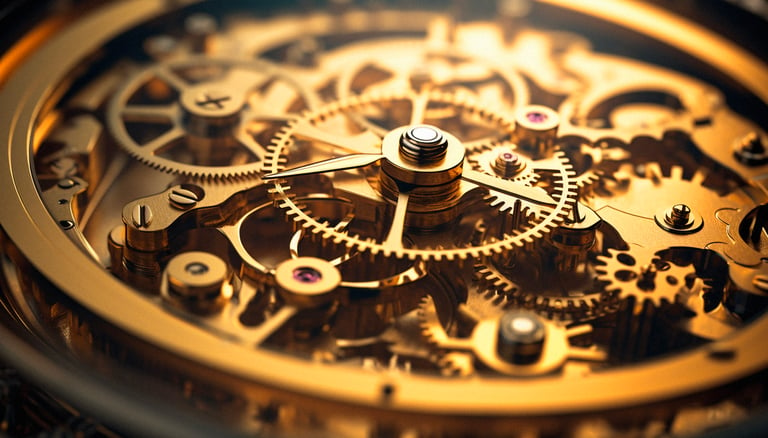The time is now

By Cape Capital
24.10.2023

Curator of Kunsthaus Zürich's Zeit exhibition, Cathérine Hug reveals why artists are natural born rebels.
At first glance, a painted skull, an 18th-century hand blown hourglass and a film exploring transoceanic migration microplastic don’t appear to have anything in common but they all, in one way or another, represent notions of time – the subject of the just-opened exhibition “Zeit”, at the Kunsthaus Zürich museum. Curated by Swiss art historian Cathérine Hug, the multi-layered, explorative group show brings together paintings, videos, installations, sculptures, and performances, all in dialogue with instruments of measuring time. ‘It is astonishing that time and its perception and measurement have only rarely been explicitly focused on by art museums like ours as the subject of an exhibition that spans epochs and is transdisciplinary, that is, one that actually includes clocks,’ observes Cathérine in the catalogue.
Equally interesting, but not surprising to anyone familiar with her curatorial approach, the exhibition also embraces rebellious artists renowned for challenging ideas and critiquing everything from art itself to the wider world. ‘All the artists I work with have something urgent to say, usually commenting in a critical way on society,’ she confirms. ‘Art is the universal symbol of freedom of expression, a way to make a statement. That’s also, sadly, why throughout the ages it has so often been censored and artists have been forced to either live a double life in terms of their creative output, or in exile.’

Kunsthaus Zürich, Franca Candrian
One of the biggest names in the exhibition who has been forced to do the latter is Chinese artist Ai Weiwei. Here, his jade handcuffs reflect on the concept of being incarcerated. ‘It is a symbol of prison where you cannot control how you use your time,’ explains Cathérine, who has worked at the Kunsthaus Zürich museum for a decade. ‘Also, in China, jade stands for integrity and honesty so Ai Weiwei is making a comment on the system of being sent to prison, whether authoritarian or democratic, and potential political injustices.’
His are not the only handcuffs in the show. German-Italian artist Monica Bonvicini, who is known for questioning power structures and the limits and possibilities of freedom within her multifaceted practice, has contributed four pairs which hang at three distinct and together chosen spots from the ceiling. Visitors are encouraged to ask a guard if they can be cuffed for 30 minutes. ‘On the one hand, they will be exposed to the gaze of other visitors and become part of the museum environment and on the other, they will be forced to look closely at the art surrounding them, but also and foremost to reflect upon the strong relationship between freedom of movement and time.’
Other interactive works include a bed with a television at the end that shows a film of the Zürich-based participatory performance artist San Keller falling asleep (‘I found artworks that deal with the mystery of sleep and being completely unconscious; here the invitation to the audience is to get into the bed and try to fall asleep before the artist’) and a library installation by Afro-American collective Black Quantum Futurism displaying critical books on time and history as well as questionnaires to be completed and an alternative, critical time-map. ‘I wanted to delve into longitude history, and how the way we look at time has a lot to do with who is in power,’ says Cathérine. ‘Clocks are aesthetically fascinating as artefacts, but from a political and sociohistorical perspective, they do also exhibit problematic colonial-historical facets.’
Although the exhibits – of which there are around 240, loosely divided into six themed sections – are undoubtedly varied, the thread tying them throughout is that they all encourage viewers to question the status quo. For instance, the painting Venice-MOCA-Dreamway (1990) of the Los Angeles County Museum of Art by the late 20th-century German artist Martin Kippenberger is transformed from a traditional landscape by the tongue-in-cheek addition of a physical, thick blue plastic chain. ‘It’s an observation about how, in Martin Kippenberger’s lifetime, artists’ work was typically only exhibited at such established institutions once they were dead and the fact that art remains. The chain in front of the painting represents the chain of time,’ says Cathérine, of the artist who was renowned for his interest in subcultural issues.

Kunsthaus Zürich, Franca Candrian
There are also three pieces by the late Roman Opalka, a Polish artist who produced numerical paintings using white paint on black or grey backgrounds with the smallest brush he could find. ‘He was rebelling against society’s pressure to have heterogeneous life experiences; you would not associate the creative process with this intense obsession with painting numbers and that’s what makes his work so disruptive,’ say Cathérine, who sees the exhibition as a platform for artists to confront conventional thinking around time, art and society.
Although Cathérine had been musing on the notion of time for a while, it was Covid that propelled her to take a proper deep dive into it. ‘With the pandemic, which in retrospect many people saw as a pause (and coined as such by the British author Oliver Burkeman in his brilliant Bestseller Four Thousand Weeks), our time was compromised. Like everyone, I was abruptly forced to change my habits. Everything shifted and it made me question how I perceive time,’ recalls the curator who cites the urgency of climate change as another reason for pursuing the topic. ‘With war and the current events happening in the world, there is a slight apocalyptic sensation but art is a way of resisting this.’
A curator for almost two decades, Cathérine has worked on exhibitions spanning everything from politics and nature to medicine and fashion. Perhaps unusually, she combined the academically diverse fields of art history, computer science and media science at the University of Zürich. ‘My parents weren’t sure that art was the best way to make a living so I made a pragmatic decision to study computer science as a contrast to art history,’ she recalls. ‘In 1970, there was a show at the Jewish Museum in New York called Software- Information Technology: Its New Meaning for Art, so I wasn’t the first person to believe that the subjects go together.’
Her open-minded approach means she doesn’t underestimate, beyond the context of a gallery space, the importance of rebellious artists who defy conformity. "Although often critical, they go beyond the norms of politics to make us think about why we are here and the meaning of life,’ she says of artists’ influence and contribution to wider society. ‘Their work enhances our perception and gives us different perspectives.’ What could be more valuable than that?
Cathérine Hug is curator 20th Century Art and an art historian currently working at Kunsthaus Gallery, Zürich